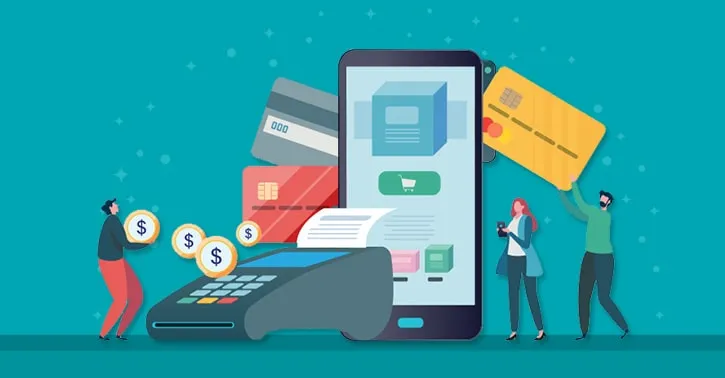

eWallet App Development – What future demands from you
If we start discussing the eWallet app development, the first thing that is required be stated here is: going digital has become the need of the hour. The revenues generated by the cashless industry reached around $2.5 trillion in the year 2019.
Now with such escalation rates, we can describe the eWallet mobile app development as one of the hottest industries. As per current figures and statistics, around 75% of the users know about the digital payments and around 40% of them find no issues in using such models.
So, no matter whether you are running a retail counter, a grocery store or an online eCommerce portal, mobile eWallet is turning out to be a basic necessity for the today’s economy. But while framing the roadmap to the eWallet mobile app development, one must know how to use and implement it in the right direction in order to conquer a high user’s base.
Before proceeding further and in-depth of the eWallet app development, it is very important to conceptualize the following categories of eWallet.

1.) eWallet for the retailers: In this context, the title itself defines the purpose of the eWallet. An app integrated with aforementioned wallet allows the users to make the payments and store all the coupons and the discounts that are associated with the product.
The cost for developing such wallets ranges between $20k-$60k
2.) For the financial organization:
This is meant for the cardholders thus are mostly used by the banks and card issuing agencies. The cost for developing such apps lies between $15k-$50k
3.) For the cards :
These types of eWallet mobile app confines to credit and debit cards usability. Such type of eWallet apps acts as an intermediate and allows the users to swap the card for processing the payment further. Google Pay, PayPal etc are the best examples in the niche.
Now since you have gathered brief information about the types of eWallet, let’s proceed towards the domains where the online payments models are commonly used.
Well, your eWallet mobile app must support all kinds of payments models. Just sticking to one or two models is not sufficient. In order to make a mark it must be able to act as a universal product, thus must be capable of serving all the models one at a time. Users use the payment models for accomplishing the below activities:
1.) For purchasing the goods and products
2.) For immediately transferring the funds
3.) For enabling POS payments
The above two are the basic forms of payments but implementing the POS payments is where the actual effort lies. Reason being it can be implemented and executed in different
ways.
Mainly there are 4 ways associated with it:
1.) QR code: This is one of the most prominent models of POS. In this approach, the business just stores their encrypted QR code over the cloud, the users can simply scan it for processing the payment further.
2.) NFC: It is can be described as a contactless payment between two enabled NFC devices. In this approach, the account or the card detail is saved in the digital form. As soon as the request for the payment occurs, the information from the NFC is automatically extracted and is directed to the payment gateway.
3.) Beacon: In this method, the payments can be processed further in the offline mode as well. Here the users are not required to swap the card for making the payments. The POS terminal will fetch the details from the cloud so as to process the payment in a hassle frees way.
4.) Payment app: In this method, different vendors can link up with any of the payment gateways. Apple pay, Google Pay, PayPal etc are already expanding their network for making the transaction in a similar way and are the best examples in the niche.
Focus on security
While developing a eWallet mobile app, a proper guideline must be framed in order to address concerned security issues. If we go by some figures and statistics, around 40% of users consider online payments as an insecure way of making payments. Reason being they may lose their devices or probably their account information might even get hacked.
The best technique that combats with such issues is tokenization. In this system, a onetime number is generated for the user that corresponds with their credit/debit card information. The token generated can only be controlled and detokenized by the service provider.
There are three types of tokenization techniques that are commonly used:
1.) While making the online transactions, the card or the account details cannot be analyzed by the merchant, it is tokenized, the moment users update some information.
2.) Tokenization at the POS terminal occurs as soon as the card is swiped.
3.) The payment providers tokenize the users' PAN and the information is stored on the device, in case of Apple and on Cloud, in case of Android.
You may also interested to know : ewallet mobile app development - cost & features
So, for developing fully secured eWallet mobile app, there are some other attributes that must be added in order developed a sophisticated eWallet mobile app.
1.) Track the rewards, coupons and the aggregator.
2.) The digital receipts
3.) Provide familiar approaches to redeem coupons and the deals.
4.) Allow the users to view the actual cash flow pertaining to their purchases within a mobile app.
5.) Make your eWallet mobile app authenticated
Other than adding these features, there are some more features that must be added so as to provide an enriching experience to the users and to perpetuate a positive growth for the businesses.
1.) Provide linked payment options (Credit/Debit cards, online payments)
2.) Access to coupons and discounts
3.) Timely notifications
4.) Reminders
5.) Location-based services
So, integrate the above attributes, select the type of eWallet app you are looking for and decipher all the usability criteria’s. Make sure that your eWallet mobile app leverages with your business and if it aligns perfect with the products, probably it will help in making noteworthy and remarkable revenues.







